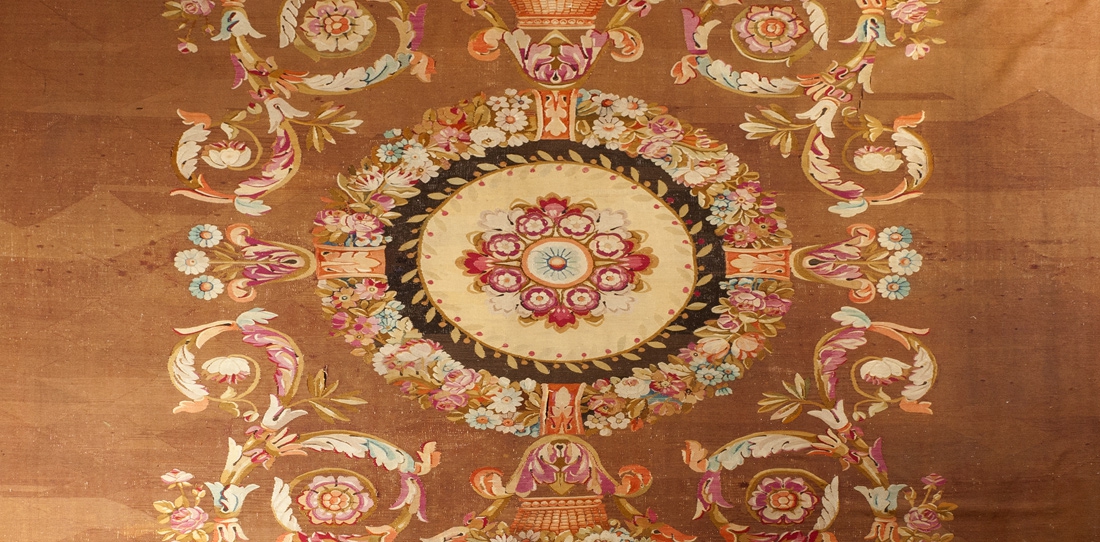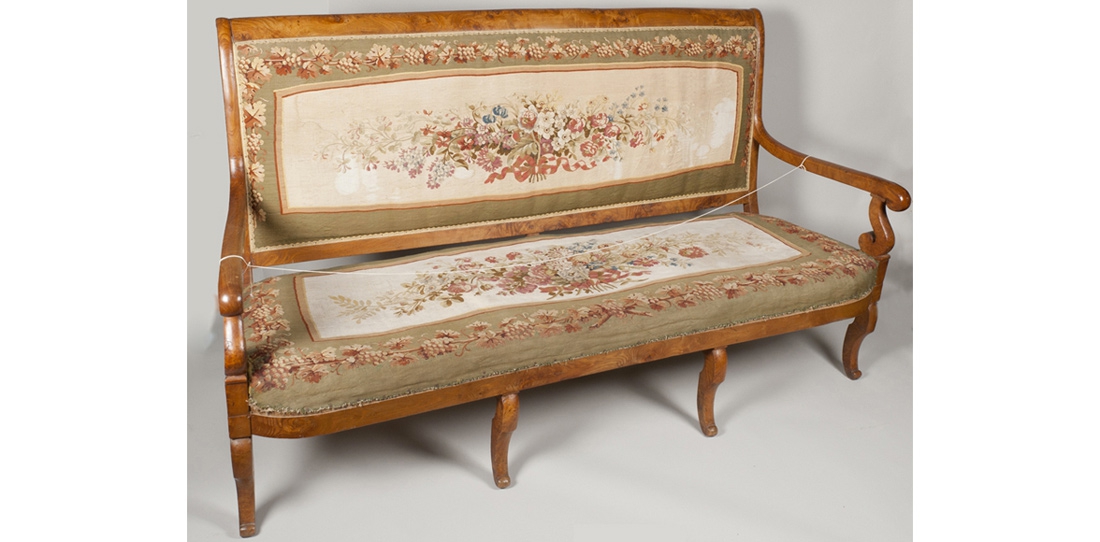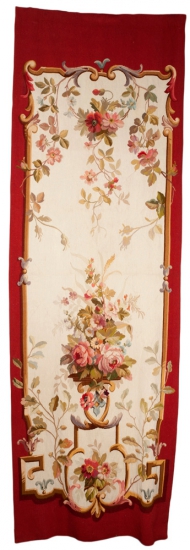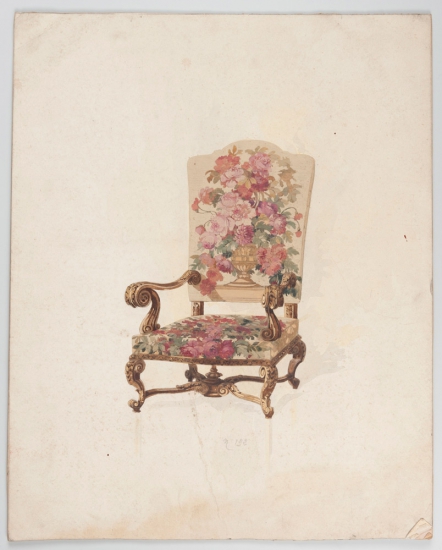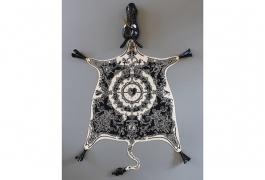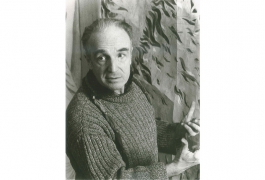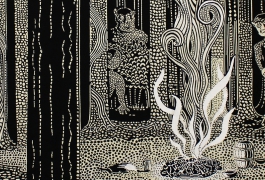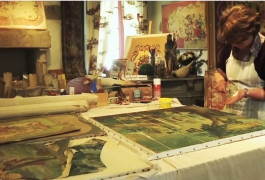19th Century: rugs, tapestries and furniture in great and new manufactures
The 19th Century is marked by the emergence of great manufactures, directed by industrial captains. The internal decoration assume greater significance in the exhibit of industrial products, then to the universal exhibitions over whose the manufactures would present their prettiest realizations.
The revolutionary era prompts a strong activity crisis. But from the beginning of the 19th Century, the recovery is spectacular with the development of great manufactures, which gather for the first time all the know-how necessary to the realization of rugs and tapestries, from the painting of the cartoons/models, dying, to the weaving. The Sallandrouze family is the root of this industrialization with the biggest firm.
Thus, the century is marked by great establishments, which will now dominate the small workshops and leave an architectural print onto the city.
Knowing a continuing rise since the middle of the 18th Century, the production of hooked rugs and low-pile carpets intensifies to overtake the tapestry one. In the early 1860’s, 2220 workers are more busy producing rugs in Aubusson. The furniture weaving (lining in armchairs, sofas, curtains, fire screens etc.) encountered a strong development as well.
Paradoxically, the rug and tapestry history in the 19th Century remains to be written with an eclectic production still poorly known (neoclassicism, neo-gothic and orientalism).
The creation of the Aubusson National School of Decorative Arts in 1884, one of the three first schools in France, with Paris and Limoges, marks a new lease of life.

